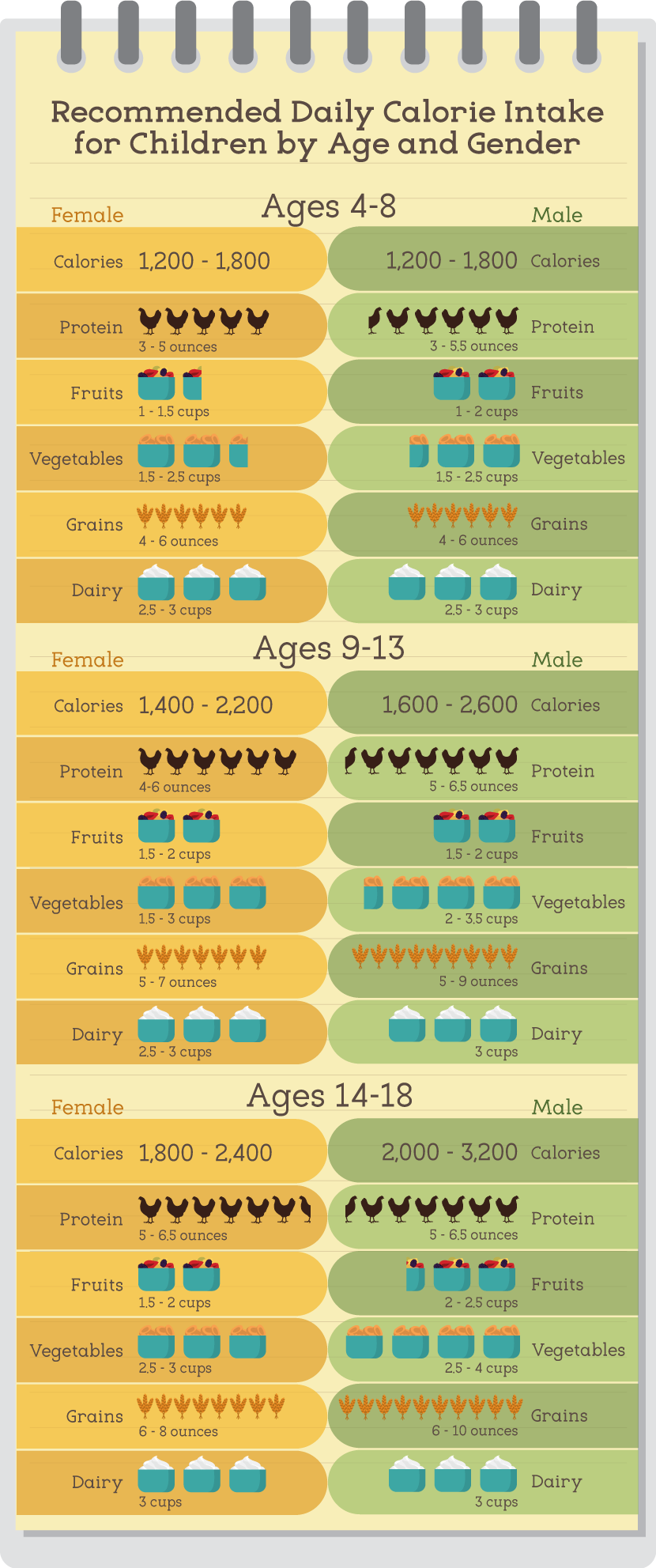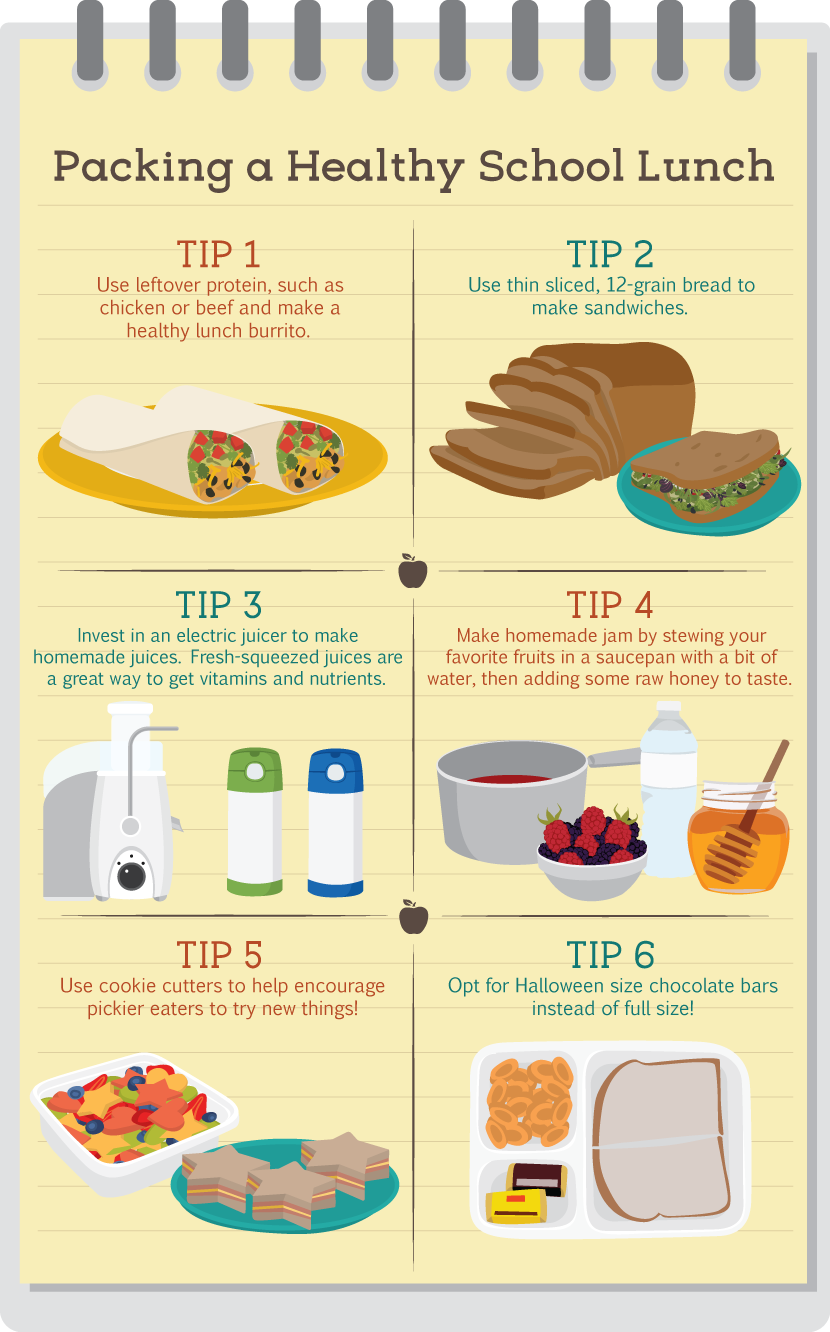Healthy School Lunch Ideas
Good nutrition is one of the most important health factors for growing
bodies and brains. Ensuring that your kids are eating the right foods early
on will have a significant effect on their health and happiness through
adolescence and into adulthood. Many people know this, but the difficulty
lies in actually making it happen.
Check out some of the most effective ways to pack a healthy school lunch for your kids.
Rising Obesity Rates
According to the CDC,http://www.cdc.gov/healthyyouth/obesity/facts.htm childhood obesity has more than doubled
in children and quadrupled in adolescents in the past 30 years.
In 2012, over one-third of all children and adolescents in the
United States were overweight or obese. Obese kids have increased
risk factors for cardiovascular disease, and they have increased
risks of developing diabetes, bone and joint problems, sleep apnea,
and social and psychological problems. On top of that, obese kids are
likely to grow into obese adults who face increased risks of heart
disease, stroke, osteoarthritis, and even cancer.

The Evils of Sugar
One of the biggest food culprits behind rising obesity levels and poor
nutrition is sugar, and it’s often harder to detect than you think. You may be
shocked to find that often the second or third ingredient in products like ketchup,
barbecue sauce, and cereal is sugar, let alone the astronomical levels in the candy
and chocolate bars that line our grocery store shelves at just the right height to
entice little eyes and hands.
But while all the cards seem to be stacked against us to provide nutritionally robust
school lunches for our kids, it doesn’t have to be an overwhelming task. By having a few
tricks up your sleeve, you can make healthy, balanced, delicious, fun meals for your
kids and still have time to get everything else done.

Love Leftovers
Leftovers are the perfect place to start. Rather than overeating during dinner or
wasting excess food, why not use your leftovers as a staple of your kids’ school lunches?
Leftover roast beef and chicken make delicious, filling sandwiches and wraps. Just cut up
some fresh tomato and basil, add some green salad leaves and a slice of (non-processed)
cheese, and voilà, the main item is done. Make sure to slice your bread as thinly as possible
(try a 7-grain, 12-grain, or whole grain rye loaf) and avoid bulky sandwich buns with low
nutritional value.
Wraps are a great way to hold messier ingredients. Leftover chili can make an excellent
burrito with the addition of some homemade salsa (just mix together chopped tomato,
onion, green pepper, cilantro, lime juice, salt, and pepper). Add some freshly chopped
red, yellow, or orange bell pepper for a satisfying crunch. Wraps also offer a great
way to get in a serving of beans, which kids often avoid when they are served
separately (or when they are not drenched in a sugar-based sauce, like the ubiquitous
cans of sweet baked beans). When you buy cans of beans, make sure you buy beans
with no sauce or other additives.
Adding fresh veggies and herbs is a great way to liven up last night’s meals –
your kids may not even realize they’re eating leftovers!
Homemade is Always Better
Reading the nutritional labels on many popular products – particularly canned,
jarred, and bottled sauces, spreads, and juices – can feel like staring at a
sign written in a language you don’t know. The lists of impossible-to-pronounce
additives, preservatives, and artificial colors and flavors seem almost comically
long on some products you’d think should be pretty straightforward.
Sugars are some of the worst perpetrators to catch because they’re not lumped
together under the word “sugar” in ingredient lists. Sugars can all be listed under
the following names: cane juice, fruit juice, corn syrup, caramel, barley malt,
glucose, fructose, sucrose, maltose, dextrose, dextrin, maltodextrin, galactose,
lactose, diatase, turbinado, and ethyl maltol. That’s a frightening list.
The good news is that you can make things like jams and juices at home quite easily.
To me, there is no better drink than freshly squeezed orange juice. It’s worth investing
in an electric juicer, especially one that’s only $15, or go for a more advanced version
to incorporate a wider variety of fruits and even vegetables. You can mix and match your
juices to your tastes, too. Try adding grapefruit, strawberry, and banana. With an
endless number of possible combinations, your kids will never get sick of their options!
For more details, check out this handy 101 guide to juicing.
To make your own jam, simply add your fruit to a saucepan (this works great with
fruits that are no longer fresh and that look a bit past their best-before date) with
a bit of water. Stew them over medium heat until you have the consistency you desire.
Add a little bit of brown sugar or raw honey to sweeten the mixture – you’ll end up
using far less than you find in store-bought varieties.
Get Creative
A healthy school lunch doesn’t have to be boring for your kids. A great way to get
them excited about healthy eating is to involve them in the process. Make a couple of
their favorite jams and spreads at home together (you can get them to name their
creations and design their own jar labels) or set up a communal DIY sandwich-making
station. This can be an excellent opportunity to teach your kids about good nutrition
and get them actively engaged in understanding all the elements of a balanced meal.

Try using cookie cutters to cut your fruit into stars or hearts for a fruit salad,
or create an Easter egg bento box with healthy snacks. These creative approaches work
especially well for younger children and picky eaters.
Treats in Moderation
Creating a healthy school lunch doesn’t mean omitting treats. It
just means including them in a smart way.
Instead of packing a full-size chocolate bar, buy little Halloween-sized bars.
Because they’re so small, you can include two different types so your kids feel like
they’re getting a two-for-one deal.
Repack snacks in small plastic baggies. This is a great way to exercise better
portion control. Instead of buying individual chip bags, buy one big bag and portion
out a smaller handful into your own re-sealable baggies.
I’ve said it before and I’ll say it again: homemade is always better.
Crumbles and cobblers are easy desserts you can make at home. Start with
one of your homemade jams and layer it over some fresh fruit (this works
great with berries, peaches, apples, etc.). Sprinkle an oat-based crumble mixture (essentially oats, flour, sugar, and butter) on top, and stick it
in the oven until it’s browned on top. The most important part of the process
is controlling the amount of sugar you include in the recipe. By making your own,
you can avoid all the extra additives in similar store-bought versions.
Keys to Healthy School Lunch Success
The secret to success in providing healthy school lunches for your
kids is to arm yourself with some helpful tips and tricks to keep things
balanced, diverse, and fun. Incorporate leftovers with fresh cut veggies,
legumes, and herbs. Make homemade jams and juices. Always check the labels
on store-bought products to see how high in the list sugars appear and whether
there are endless unpronounceable ingredients you’ll want to avoid. Get
creative – who doesn’t love playing with their food? And don’t be afraid
of a little indulgence – treats in moderation are a good thing, especially
when they reward and reinforce healthy eating behavior.
Embed the article on your site

